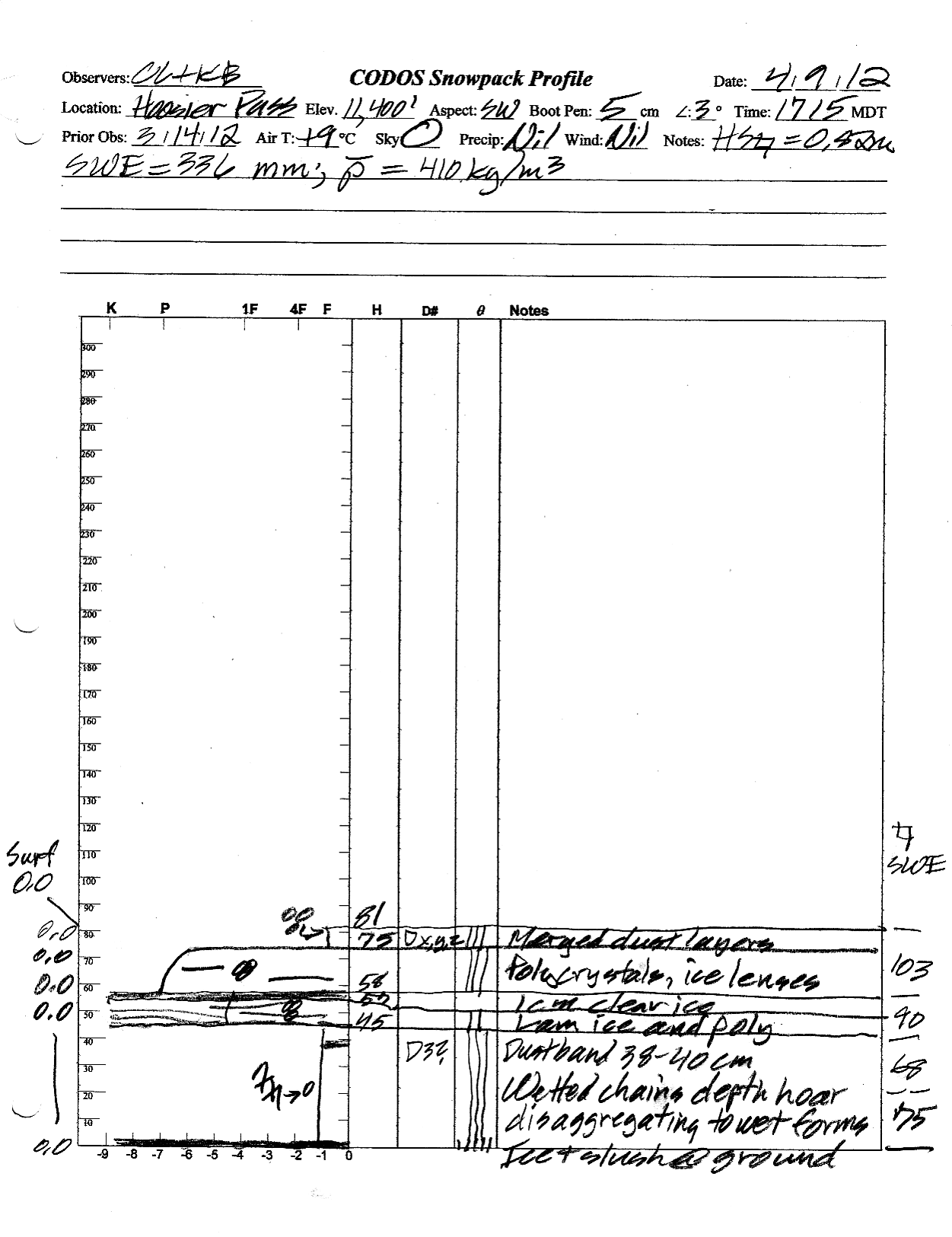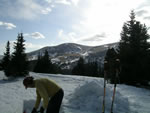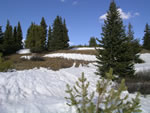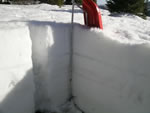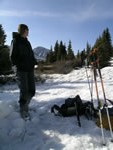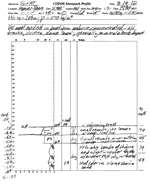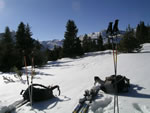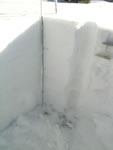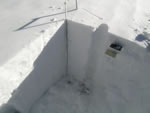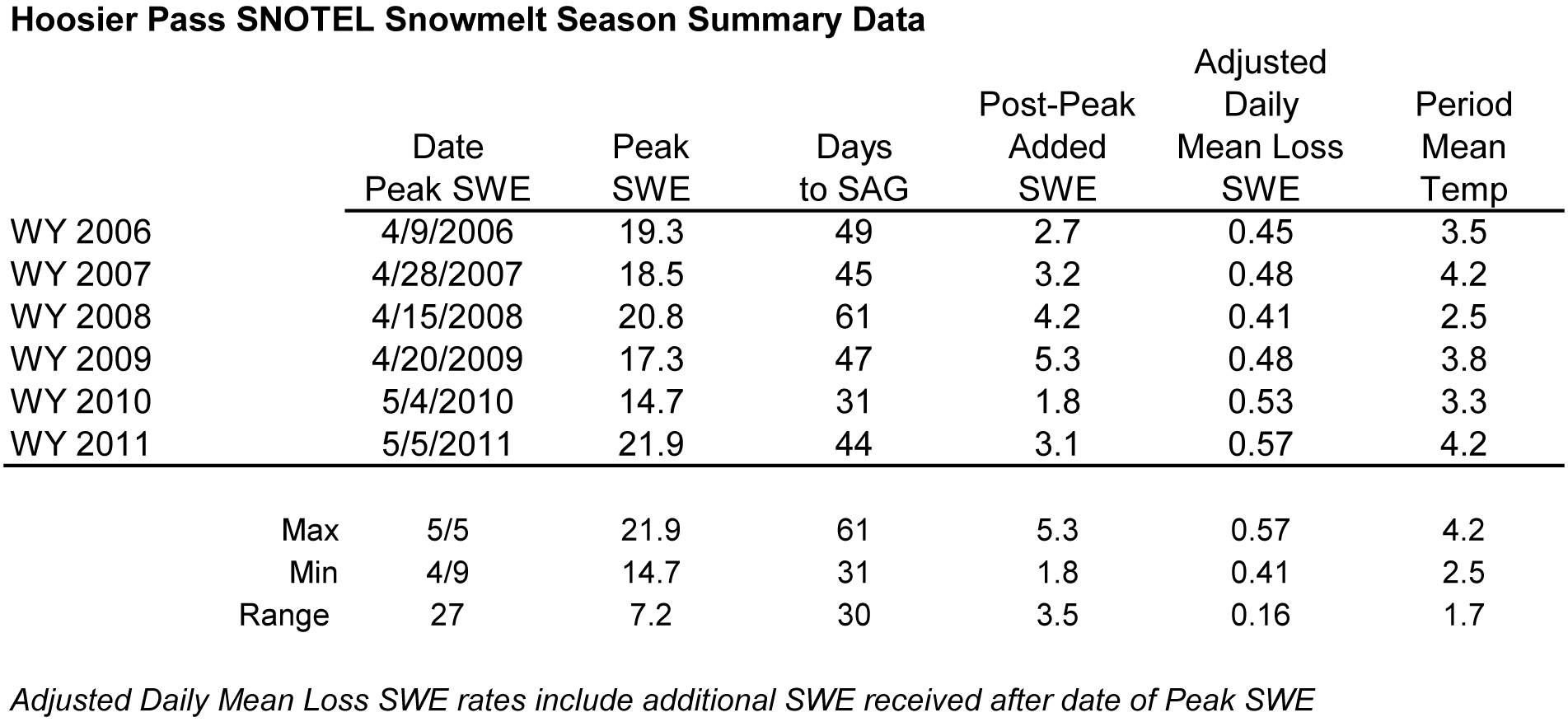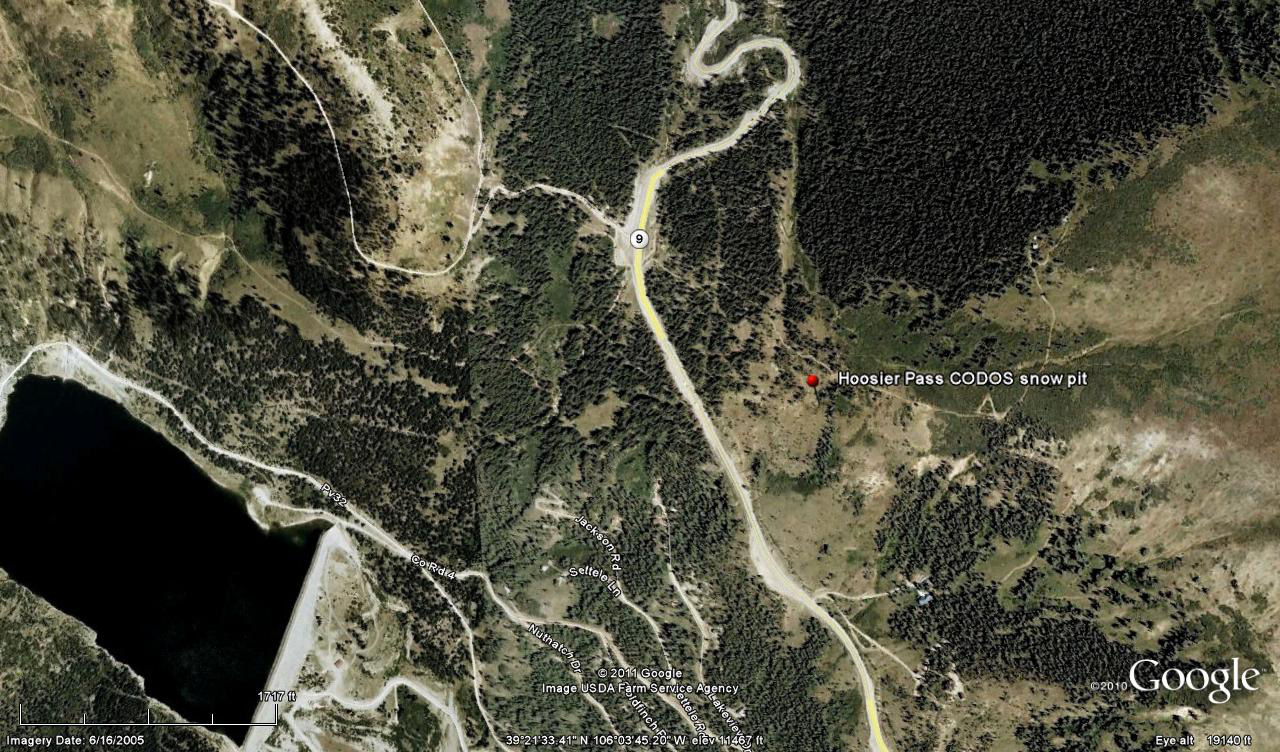 CODOS Update for Hoosier Pass:
CODOS Update for Hoosier Pass:
Visited April 9, 2012
Summary | Snowpack | Melt Rate | Stream Flows | Previous Update
Summary
Sustained periods of unseasonably warm air temperatures and exposed dust at the snowpack surface during late March and early April 2012 have, together, initiated accelerating rates of snowmelt and SWE loss at some, but not all, CODOS Snotel sites. Some CODOS Snotel sites report significant declines in SWE approaching the lowest values in the period of record (for a given date) or even falling outside of the historic range. Those sites may have experienced Peak SWE for WY 2012 in early or mid-March. Recent CODOS snowpits near those CODOS sites mirror those losses of SWE.
In contrast, other CODOS Snotel sites and CODOS snowpits show only small losses of SWE. At those sites, energy inputs from warm air and direct absorption of solar energy by dust at the snowpack surface was consumed in warming the snowpack towards an isothermal state at 0° C, as a precursor to the loss of SWE and onset of snowmelt runoff. Since our prior site visit on March 14 the snowpack at the Hoosier Pass CODOS site has lost all cold content and is now isothermal.
The National Weather Service expects warming weather in the Colorado mountains through Wednesday with strong SW’ly winds developing on Wednesday afternoon ahead of a cooler but largely dry airmass. Unsettled and cooler weather will finish the week and run through the weekend, including chances for rain and/or snow showers each day.
SnowPack Discussion
The snowcover at the Hoosier Pass CODOS site has undergone complete warming since our March 14 snowpit and is rapidly melting, exposing large patches of open ground between patches of remaining snowcover in this thinly wooded area near treeline. We walked to this site on dry ground for much of the approach. Dust loading at Hoosier Pass is much less intense than at our Senator Beck Basin study sites but has been sufficient to absorb additional solar energy at the snowpack surface and contribute to warming and ablation of the snowcover. Again, as noted in prior discussions, considerable open ground may be contributing ‘local’ dust and vegetation debris to the snowpack in these Front Range locales, compounding the effects on albedo produced by Colorado Plateau dust.
On March 14th the snowpack at our Hoosier Pass CODOS snowpit site was 41” (105 cm) deep and most of the snowpack consisted of very weak “depth hoar” grains; mean snowpack temperature was -3.7 C. Dust event D4 was clearly evident on the snow surface at the snowpit and in terrain around Hoosier Pass. SWE content in the snowpit was 11.1” (281 mm) and mean density of the snowpack was 273 kg/m3 (27.3% water content). As a result of the subsequent, prolonged period of warm, dry, and sunny weather, and some additional small reductions in snow albedo from additional dust events, the snowpack on April 9th was fully isothermal (0°C), with wet or very wet snow throughout. Total SWE in this pit was actually higher than in the March 14 pit, at 13.2” (336 mm), likely due to wind-related spatial variation in snowpack and perhaps contribution of melt water from uphill snowcover; total snow depth was down to 32” (81 cm) and density had risen to 410 kg/m3 (41.0%).
In general, snowcover in the Hoosier Pass vicinity is extremely sparse.
| April 9, 2012: | |||
Pit profile |
Hoosier Snotel |
Looking downhill from pit |
Looking uphill from pit site |
April 9th pit |
Patchy area surrounding pit |
||
| March 14, 2012: | |||
Melt Rate
The Hoosier Pass Snotel site, which is shaded by adjoining trees, has shown very small losses of SWE since mid-March and retains about 9” of SWE. These melt rates fall well short of those observed in prior years.
Stream Flows
We cannot interpret currently posted streamflow data for Blue River, the South Fork of the South Platte in South Park, or for Tarryall Creek at Como.

